Escondido was penalized 15 yards before it participated in the kickoff or took a snap at the beginning of the second half of a Metropolitan League game at Grossmont.
Referee Charlie Smith, also the San Diego State baseball coach, penalized the Cougars for not being on the field and ready for kickoff after the 15-minute halftime.
Escondido coach Harry Wexler at first was dumbfounded and then angry.
After pleading with the uncompromising Smith, the Cougars’ coach likely suggested the referee do something that was physically impossible and offer Smith a middle-finger salute.
Wexler then pulled his team off the field.
Writer Charlie Byrne of The San Diego Union pointed out that the Spaulding Official Rules of Football stated that teams should be ready and on the field after the break. Game officials, the rule book pointed out, were not required to notify the teams.
TIMING OFF?
“I even told the team I thought halftime was a little long,” explained Wexler, who expected the usual, three-minute heads up from one of the flag throwers.
Grossmont coach Jack Mashin seem to side with Wexler but reluctantly accepted the penalty before the start of the third quarter when Smith informed the Grossmont captain, who looked for direction to Mashin on the sideline.
“If I didn’t have my team’s back in a situation like that I would lose support of the team and the student body,” said Mashin.
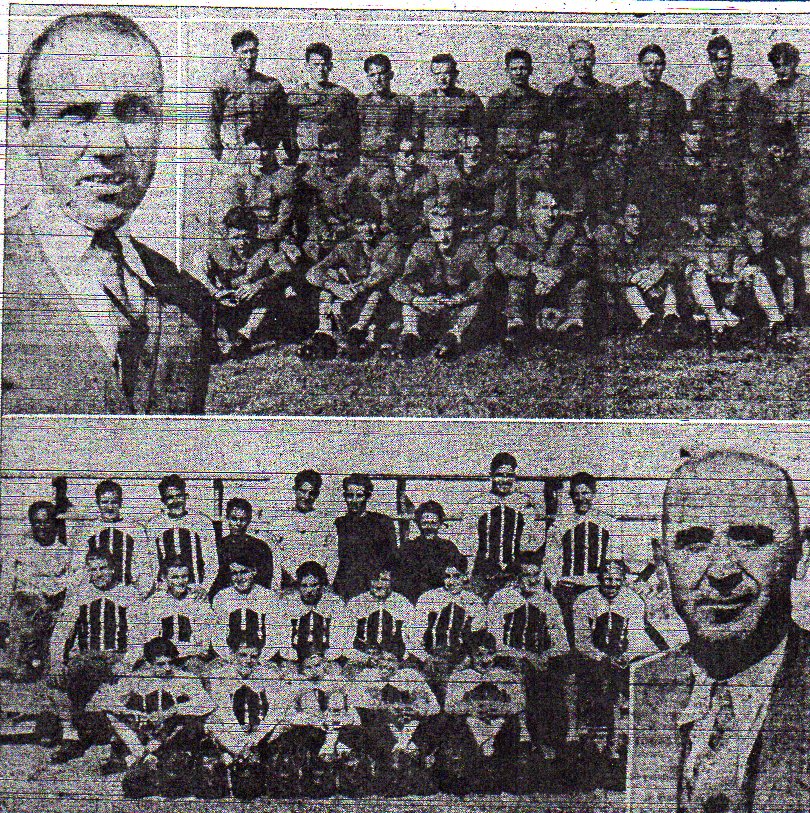
King Kaufman, president of the Grossmont School Board, was at the game and tried to convince Wexler to continue. Wexler refused. Meanwhile, several hundred spectators milled about the officials, although there was no disorder, reported Byrne.
Escondido players appeared shocked at their coach’s decision and stayed on the field for several minutes before heading to their buses and the trip home.
Referee Smith was unavailable for comment. Grossmont the winner by forfeit, 1-0.
WOE IS US
Joe Beerkle was 6-4 and 6-0-1 in his first two seasons at Point Loma but offered a gloomy outlook for 1937.
“Everybody is going to be gunning for us,” said Beerkle of Point Loma’s defending Metropolitan League champion, “but the sad part of it is we’re not going to have anything worth gunning for.”
The Pointers didn’t get the memo.
Point Loma rolled to an 8-0 record. Beerkle moved on to become head coach at San Diego the following year and was there through 1942, when he became principal at Memorial Junior High.
The Hilltoppers were 18-14-2 under Beerkle.
Beerkle’s record does not include the split squads of Cavemen and Hillers that were a combined 13-2-2 in 1942. San Diego was 1-0 as a complete squad that season.
GOLF OVER FOOTBALL
The Pointers had seven returning lettermen but had lost 11 and returned only one starter. Two other letter winners moved away and three more either were nursing injuries, ineligible, or in the case of one, recovering from an appendectomy.
Harry LeBarron, a strapping, 175-pound end, contributed to Beerkle’s woe by announcing that he was retiring.
LeBarron was giving up football to concentrate on golf. He had qualified for the 1936 Southern California Junior finals.
But LeBarron returned in Week 2 and made the all-Metropolitan League second team.
Paul (Red) Isom was a threat every time he touched the ball and the rising power on the peninsula raced to an undefeated season, punctuated by a 64-13 rout of Oceanside in the final game.
Keeping with tradition, the Pointers declined to participate in the Southern California minor division playoffs.
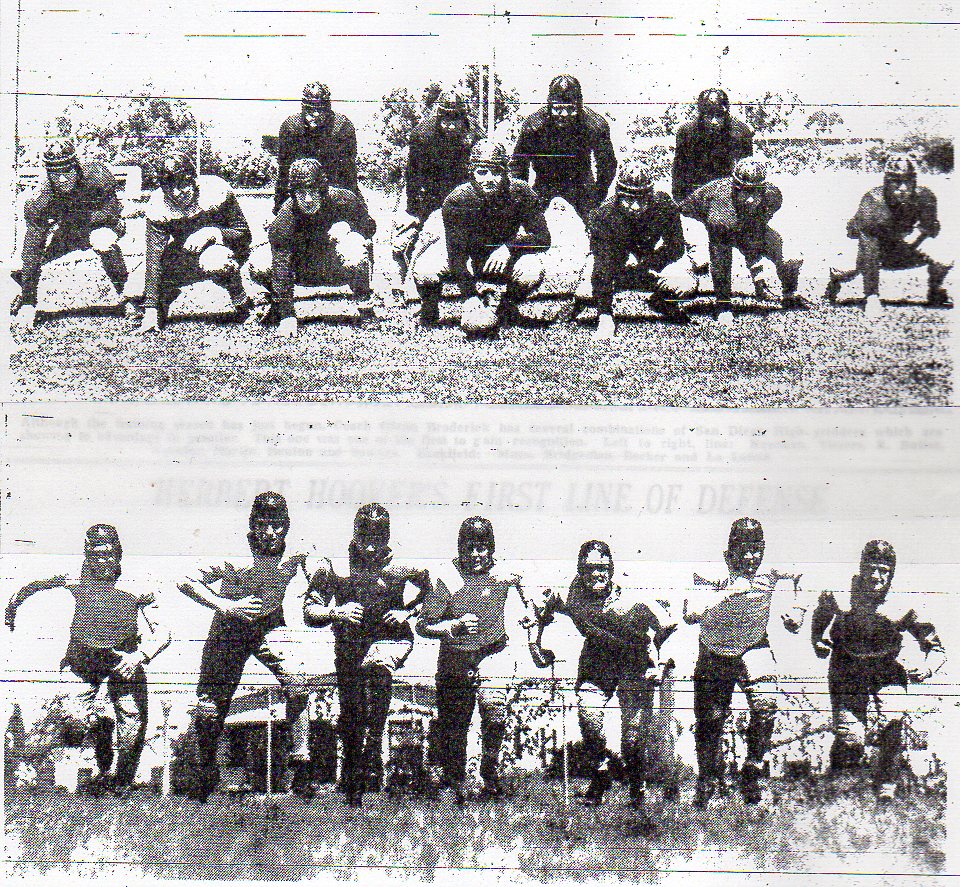
IN THE BLACK
The highlight of Glenn Broderick’s last season as head coach at San Diego was a 14-13 win over Coast League rival Alhambra.
Leonard Black ran 96 yards with an intercepted pass for a touchdown and Bob Bridgeman kicked two points after touchdowns as the Cavemen took a 14-7 lead into the final minutes.
Alhambra scored a touchdown but its try for point hit the crossbar, leaving San Diego in front, 14-13.
Problem. The Cavemen were off-side. The Moors lined up for another try, this time attempting a running play, but Black stuffed the runner at the goal line.
FRUSTRATION AND INJURY
The season record was the poorest since 1914 and the Hilltoppers were last in the Coast League for the first time since the circuit was formed in 1923.
“Wish they had that fight all the time,” Broderick remarked to Charlie Byrne, after a particularly spirited practice before the annual intersectional battle at Phoenix.
“If the fellows were like that all the time we’d win all our games,” said Broderick.
The Hillmen offered little at Phoenix, outgained, 280-91, out-downed, 14-5, and outscored, 19-0.
The team returned home but Broderick had to remain in the Arizona city, arranging for hospital care for lineman Dick Butler, stricken an hour after the game and operated on for a hernia.
Butler would be hospitalized for two weeks, but Broderick made sure a radio was placed in his room and Phoenix officials agreed after San Diego complaints that they would not use local officials for future games in Arizona.
It was that kind of trip.
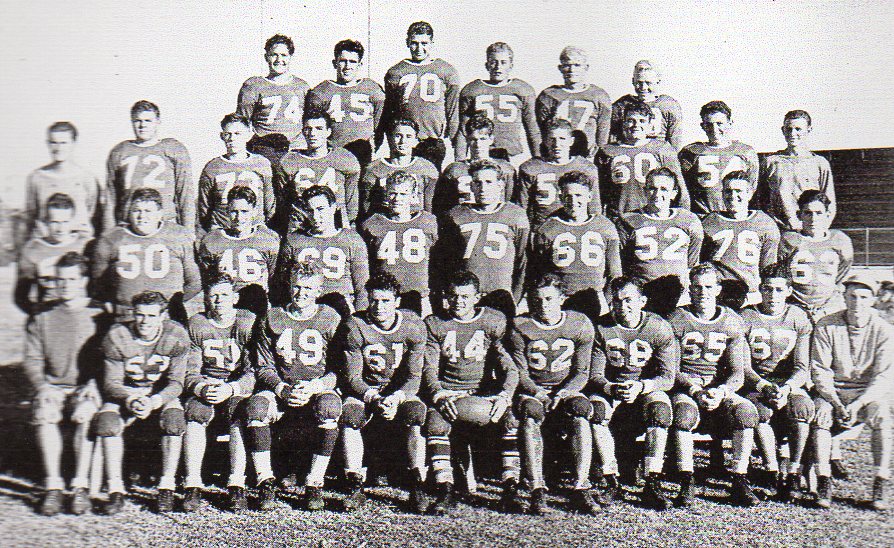
HILLERS WIN STATE TRACK
Broderick, who joined the faculty in 1926, left San Diego at the end of the school year and went out a winner.
The Cavers were beaten by Hoover, 63 1/2-58 1/2, and finished in a tie for the Coast League track and field title with the Cardinals and Long Beach Wilson.
But the Cavers scored 24 points to beat the runner-up Cardinals in the Southern California finals and outscored 88 other teams with 18 points and won the state team title.
Broderick left teaching and worked at Convair for many years. He eventually returned to a first love, track and field, and was a finish judge and timer for many years at area events.
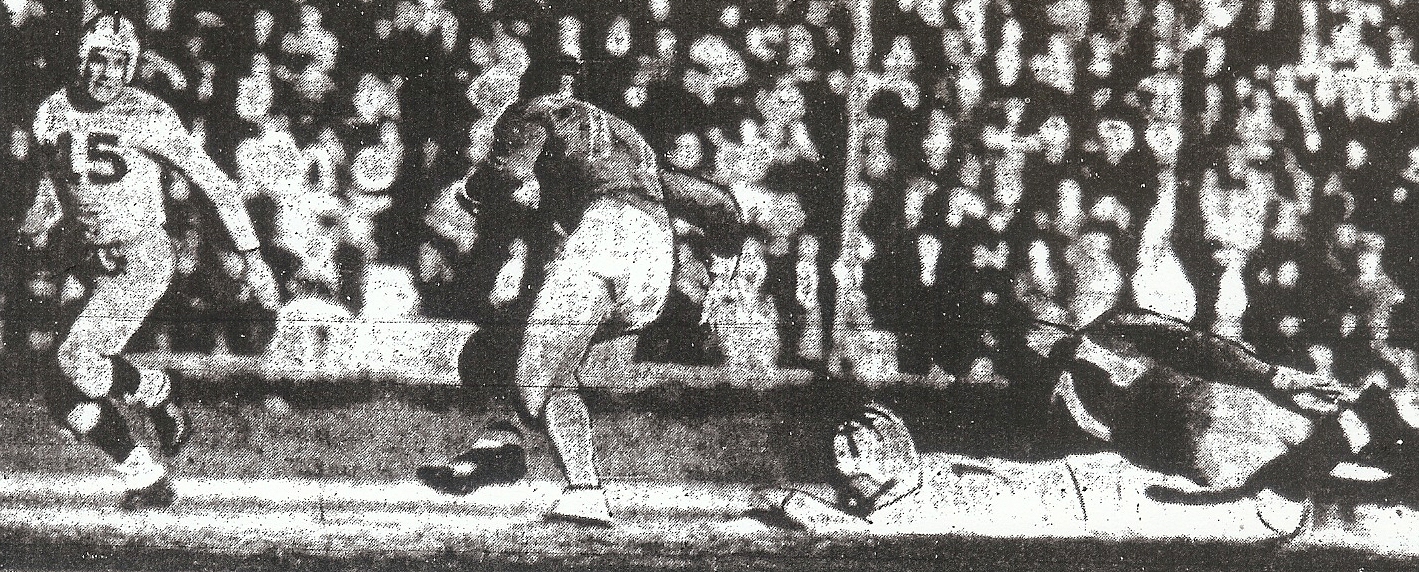
MANY COME BUT ONLY ONE CALLED
From an original group of at least 15, San Diego High officials whittled the list of candidates to replace Broderick to six.
Joe Beerkle of Point Loma eventually would be appointed.
Others considered for the job included Frank Ribbel, coach at Richmond High in the East Bay area of San Francisco and a San Diego High alum; Bob Erkine, Brawley High; Dean Johnson, coach of the high school in Freeport, Il., and Gil Kuhn and Gaius (Gus) Shaver, former USC grid stars.
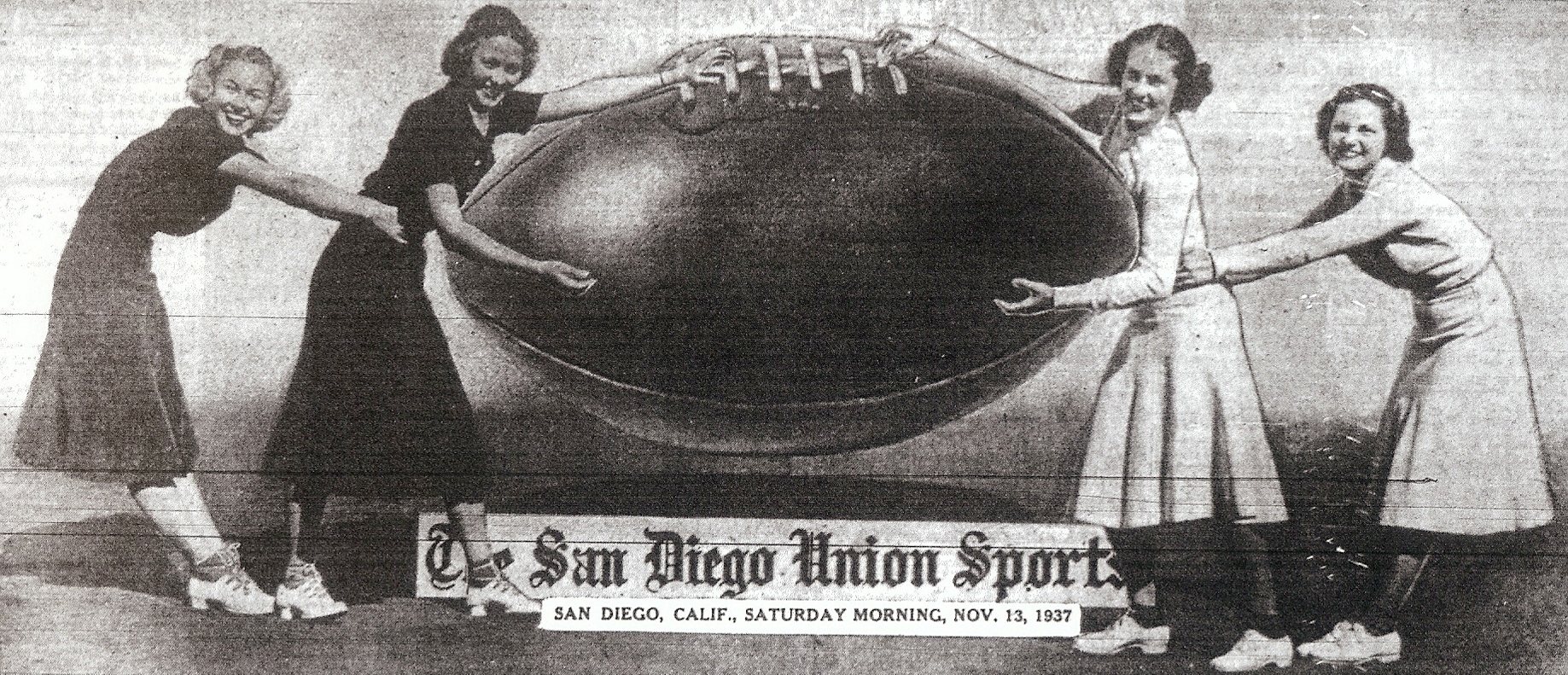
HOOVER ASCENDS
Hoover was 6-2 and defeated San Diego, 13-6, for its second victory in three years over the Cavers.
Ernie McNulty led all rushers in the San Diego game with 50 yards in 12 carries and punted with amazing power, averaging 43 yards on eight attempts.
Hoover had a 104-yard advantage in the kicking game. San Diego averaged only 29 yards a punt.
McNulty also boomed a 50-yard, coffin-corner kick that expired on El Monte’s six-yard line. The Cardinals’ 19-6 win over the visiting Bears in the final game was a season highlight. El Monte was champion of the Pacific League in the San Gabriel Valley.
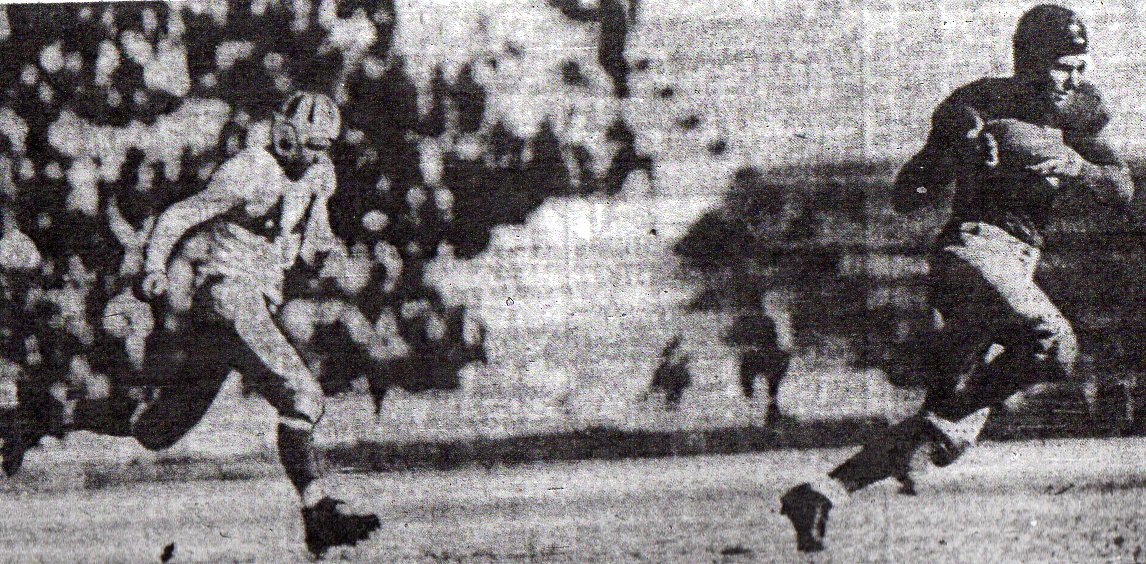 Hoover’s Leon Carver caught pass from Bob Beckus after slipping behind San Diego defense and scored go-ahead touchdown on 63-yard play that was sent in from Cardinals’ sideline in 13-6 victory. San Diego’s Ervie Davis trails.
Hoover’s Leon Carver caught pass from Bob Beckus after slipping behind San Diego defense and scored go-ahead touchdown on 63-yard play that was sent in from Cardinals’ sideline in 13-6 victory. San Diego’s Ervie Davis trails.
CARDINALS’ BLING
So impressed was the Hoover booster club that the group, made up of area businessmen, presented 25 players with engraved gold footballs.
The Cardinals also were celebrated as city champions, although they didn’t play unbeaten Point Loma. St. Augustine claimed the city private school championship with a 25-0 victory over Brown Military Academy.
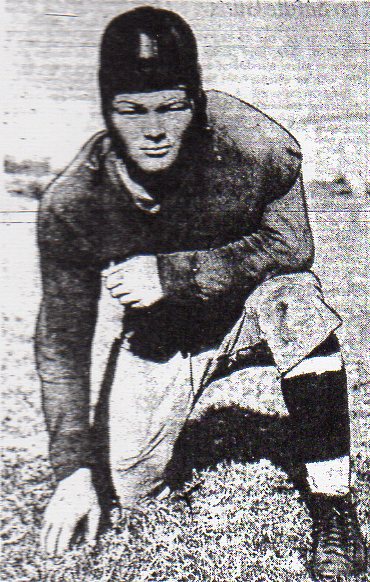
3 TEAMS, 2 GAMES
Sweetwater’s Dinon Bush scheduled two opponents in one day. The Red Devils played to a scoreless tie with San Juan Capistrano and defeated San Dieguito, 18-6.
Bush, an ex-San Diego State gridder who most recently coached at Hemet, divided a squad of 50 players into three units. Quarters were 10 minutes instead of the standard 12.
Non-lettermen with experience played Capistrano. Sweetwater players who lost to El Centro Central the previous week took on San Dieguito.
The triumvirate was complete when sophomores played in both games, relieving the first two groups.
HORACE GREELEY, I HEAR YOU
First-Year La Jolla coach Marvin Clark followed the road west.
Clark played at the University of Arizona in Tucson and then accepted a position 240 miles away, on the Arizona-California border, where he was head coach for nine years at Yuma.
Clark moved west another 73 miles when he was head coach for two seasons at Brawley in California’s Imperial Valley, and finished his voyage next to the shores of the Pacific Ocean when Clark moved to La Jolla, 134 miles from Brawley.
Clark found his niche in the seaside community. He eventually became the Vikings’ principal before retiring in the early ‘sixties.
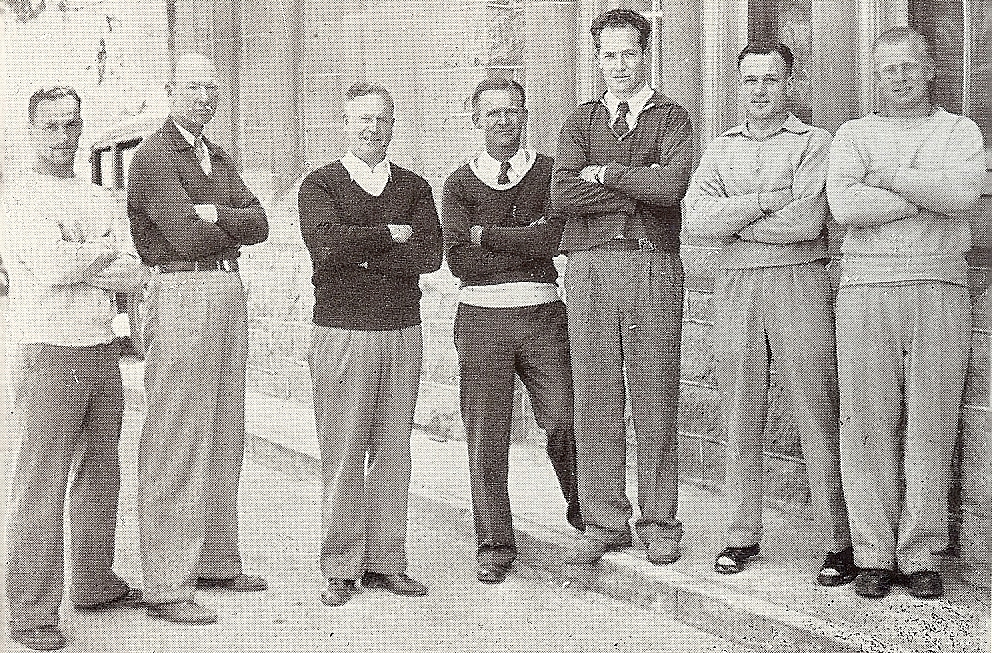
SIGNS OF THE TIMES
Seventeen players from Carlsbad High in Southeast New Mexico marched into the city room of the Carlsbad Current-Argus and announced they were boycotting the next day’s Thanksgiving Day game with hated rival Artesia.
According to the Associated Press, school officials had refused the players permission to watch the USC football team practice. The Trojans, as is custom, stopped in Carlsbad on their railroad trip to South Bend, Indiana, to play Notre Dame.
Insult, according to the AP, was added to injury when the Carlsbad players also were denied permission to accept an invitation to accompany the USC squad on a sight-seeing tour through Carlsbad Caverns.
School officials somewhat condescendingly said, “They’ll play tomorrow.”
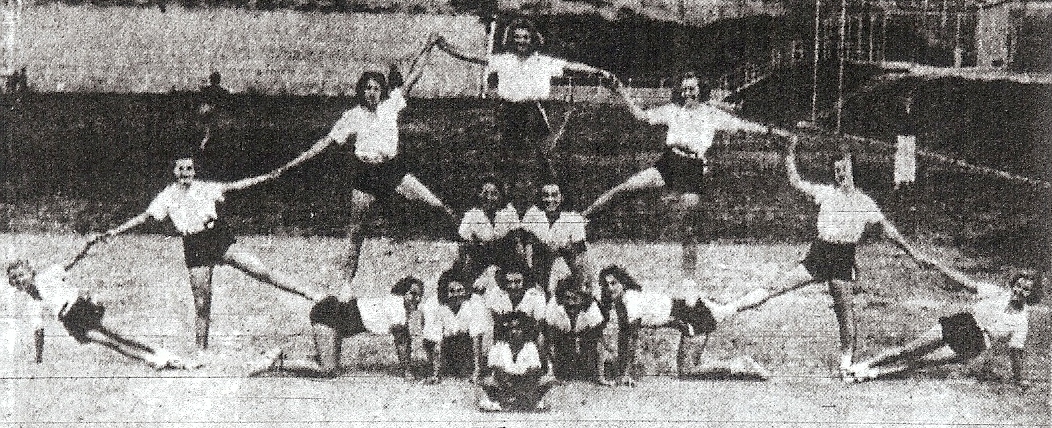
VAN PATTEN REWARDED
Southern Section commissioner Seth Van Patten was elected for another term that would pay him $2,400 annually. The CIF budget was approved at $4,500. A 19-year-old age minimum was established and schools in the city of San Francisco formed the sixth CIF Section.
Van Patten moved the CIF office to South Pasadena High and Bill Schroeder of the Helms Athletic Foundation in Los Angeles created the first, recognized All-CIF Southern Section team.
NATURAL STRIKE
More than 170 firefighters battled a blaze on the west slope of Mount San Miguel, which overlooked the Southeast corner of the County. The fire was started by a bolt of lightning and fueled by Santa Ana winds and hot, late-summer temperatures.
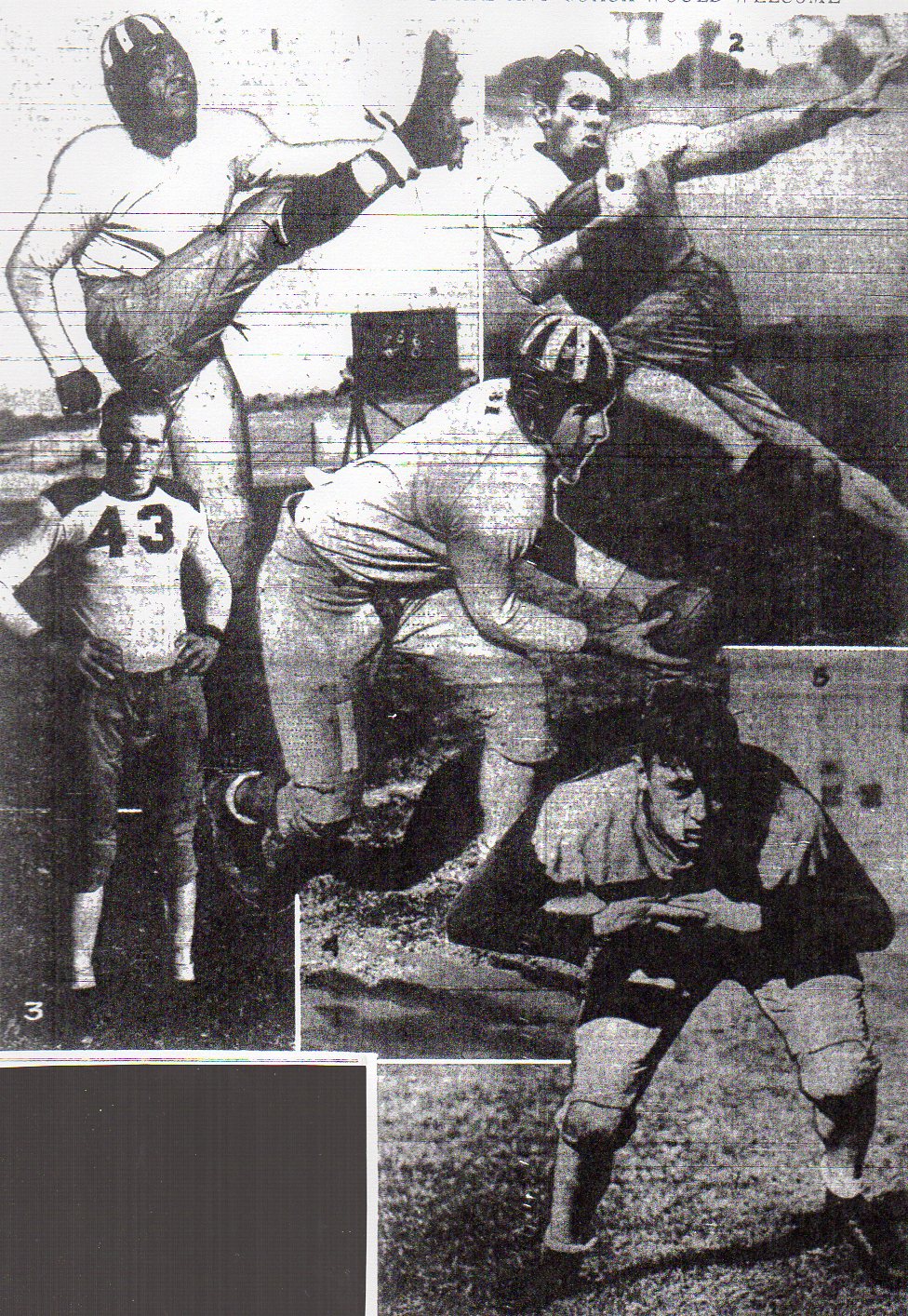
TRUE GRID
Two changes in the football rule book would stand the test of time…kickoffs were reduced to one attempt…if the ball went out of bounds, the receiving team automatically started on its 35-yard line …numerals were required on the fronts and backs of game jerseys…Point Loma’s 64-13 victory over Oceanside represented the most points by a San Diego team since Coronado defeated La Jolla, 73-6, in 1929…Pomona claimed the biggest lineman in the country, 311-pound Bruce (Tiny) Twerill, who had pared from 317 pounds in 1936…Hoover coach John Perry locked gates around the Cardinals practice field before the San Diego game and had “husky” alumni and ROTC personnel keeping visitors away…actor Leo Carrillo owned a ranch in Vista and was said the be a sponsor of the first-year school’s football team…with Fallbrook playing football for the second season, only Ramona, Mountain Empire, and Julian did not field teams…Escondido’s Frank Thames kept it short, scoring on runs of 3, 3, 4, 2, and 1 yards and adding as point after in the Cougars’ 39-7 win over La Jolla…pinched financially as the Great Depression worn on, San Diego attempted to find another opponent after its season ended in a 7-0 loss to Long Beach Wilson, but there were no takers…San Diego standout Leonard Black also served as president of the senior class…when Sweetwater coach Dinon Bush announced that the Red Devils would field a “pony” backfield and big line, Coronado’s Hal Niedermeyer said, “We’re going to have a pony line and a midget backfield”….
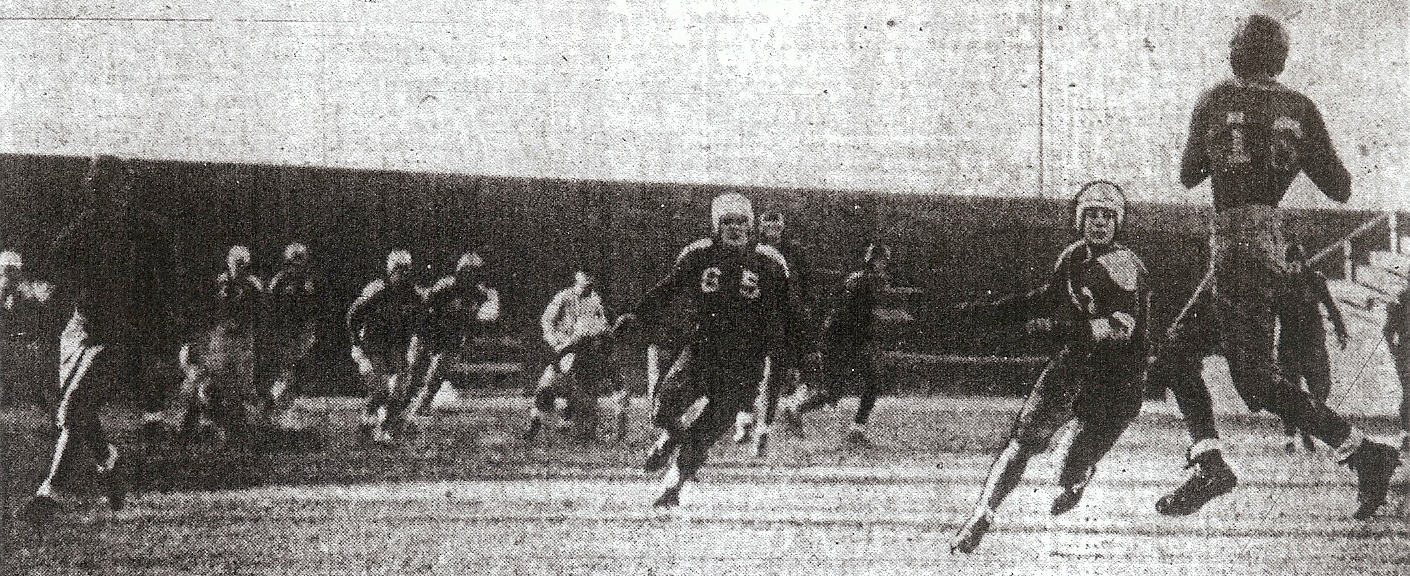

Rick, thanks for doing great work on this site! I’m a Point Loma grad from 1965 (I kept statistics for Bennie Edens during the 1963 & 64 seasons) and been away from California since leaving for grad school in 1970. I have memories of the San Diego HS teams of the 1950s. Our housekeeper was Ezell Singleton’s aunt if I recall correctly. One quick question, you note in this column that Point Loma declined to participate in the CIF playoffs ‘…as was their tradition.’ Do you know any reasoning behind this?
Policy probably is a better word than tradition. Playoffs just did not have the currency in those days. Teams actually were involved in playoff games before their regular seasons were concluded. Scheduling was on a day’s notice in many cases. Hoover, for example, lost a 1931 playoff to L.A. Loyola and then finished the season the next week against Oceanside. Point Loma, 7-0-1 and Metropolitan League champion, dissed the playoffs in 1946. Grossmont, which Point Loma beat that year, then took the Pointers’ place and played El Centro Central. There were seasons in which the CIF scrambled for teams to fill out brackets. Travel always was a potential issue for teams in the L.A. area and in San Diego. But Don Giddings’ 6-1-1 1949 team accepted an invitation and won 3 playoff games and the CIF Lower Division championship.
This is really a fun read. Love that pic of the S.D. coaches, brings back fond memories. Coach Crosby was my favorite high school coach. He always encouraged, no negatives. He would participate with his students, not stand back and “coach” and his hair was very gray by 1953. Coach Ruffa with his gravelly voice, was a character you had to like. Got to know him well when I worked at Olsen-Johns Ship Chandlers on the G Street Pier in the late ‘fifties. He would come in at least once a week and always had stories. Mike Morrow, as I’m sure you know, was THE all time character amongst local coaches. He was so funny, but don’t know if he realized it. My story is, can’t remember if I was at San Diego High or the Junior College. He took a few of us from PE class up to the ball field Northwest of the stadium. There he hit us infield for more than a half hour, working our asses off. He was so funny, never stopped chattering the whole time! He had a very long and fruitful career from sandlot to HS to JC and finishing at USD. You mention “split squad”, can you explain? One minor detail, you say Leo Carrillo’s ranch was in Vista. It is currently in Carlsbad, but back then it was probably in unincorporated county land. No big deal.Cheers, IW
To get the whole story, go to the narrative on the 1942 season, “Imperiled Season is Saved“. Travel was restricted because of World War II. San Diego’s opponents in the L.A. area wanted to cancel games. This would have been disastrous for San Diego and Hoover, which relied on revenue from football games. Other schools in the San Diego area came to the rescue. San Diego and Hoover were invited to join Metropolitan League schools in one giant league, but to balance the competition, San Diego and Hoover each agreed to split their teams into two separate squads, the San Diego Hillers and San Diego Cavemen and the Hoover Reds and Hoover Whites. I knew some of those coaches when I was young sportswriter. Dewey (Mike) Morrow was a gentleman and a character, for sure. I was good friends with Ted Wilson’s son and Bill Schutte, George’s older brother, was a kind and friendly man. Never could figure out Ed Ruffa when I was a student at San Diego JC. He always seemed to have his mind elsewhere. Broderick, I met at track meets. I gave him and Bob Lantz a ride home from Bakersfield after the 1965 state meet.